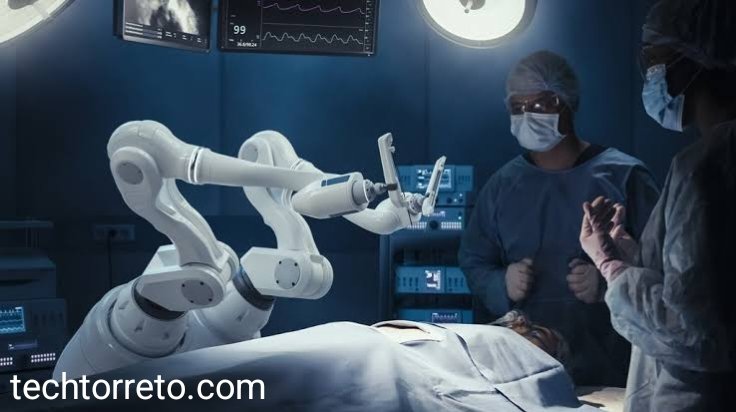How Future Healthcare Technology Is Elevating At-Home Care

Introduction to the Revolution in At-Home Healthcare
The world of healthcare is evolving rapidly, and nowhere is this transformation more visible than in at-home care. With the rise of innovative tools and intelligent systems, patients are no longer bound by the walls of a hospital. Instead, they are empowered to manage their health in the comfort of their homes. So, how future healthcare technology is elevating at-home care is a question gaining significant attention today.
Notably, this shift doesn’t just enhance convenience—it also boosts patient outcomes, lowers healthcare costs, and offers personalized care solutions.
The Driving Forces Behind Technological Advancements
Aging Population and Chronic Illness
One of the key factors fueling the development of at-home care technology is the global increase in the aging population. As people live longer, they are more likely to suffer from chronic diseases such as diabetes and heart conditions, which require ongoing management.
Demand for Personalized Healthcare
Simultaneously, modern patients expect healthcare experiences tailored to their specific needs. This demand has led to innovations that adapt care routines based on real-time data.
Smart Medical Devices for Home Use
Wearable Health Trackers
Wearable devices like fitness bands and smartwatches now come equipped with advanced health monitoring features. They track heart rate, sleep patterns, and physical activity, all of which provide doctors with crucial data without requiring patients to step outside.
Remote Monitoring Equipment
From portable ECG machines to glucose monitors, remote equipment allows healthcare professionals to monitor vital signs continuously. These tools are instrumental in reducing emergency room visits.
Telehealth and Virtual Consultations
24/7 Access to Healthcare Professionals
Through telehealth platforms, patients can now connect with doctors any time of day. Whether it’s a routine check-up or a mental health consultation, virtual visits bring care directly to your home.
Reducing Hospital Visits and Readmissions
Furthermore, these technologies reduce the need for hospital stays, which can be both costly and stressful. Real-time consultations ensure issues are caught early, preventing complications.
AI and Predictive Analytics in At-Home Care
Real-Time Health Predictions
Artificial intelligence plays a vital role in predicting potential health issues based on user data. For example, changes in heart rate or sleep cycles can signal early warnings of disease.
Early Diagnosis and Prevention
AI systems are also improving diagnostic accuracy. These tools assist doctors in identifying symptoms sooner, enabling preventive care strategies.
Robotics and Automation in Home Healthcare
Robotic Assistance for Elderly and Disabled
Innovative robotic solutions provide mobility support and even companionship for patients who live alone. They can remind users to take medications or help them move around safely.
Automated Medication Dispensers
To avoid medication errors, automated dispensers are programmed to release the right dosage at the right time—especially useful for seniors with memory issues.
Integration of IoT in Health Systems
Interconnected Devices and Data Sharing
Internet of Things (IoT) devices in healthcare link home systems with central medical records. These connected ecosystems ensure that every health update is instantly recorded and accessible by your care team.
Enhancing Coordination Among Care Providers
This seamless communication across platforms leads to more cohesive care. Specialists, primary doctors, and caregivers can collaborate more effectively than ever before.
Enhanced Patient Engagement Through Apps
Mobile Health Applications
Apps are transforming how patients interact with their health data. From tracking symptoms to receiving daily wellness tips, these tools foster proactive self-care.
Personalized Treatment Plans and Reminders
Apps can also generate customized plans based on the user’s history and schedule medication alerts, meal plans, and physical therapy routines.
Data Security and Privacy Challenges
Safeguarding Patient Data at Home
While technology enhances care, it also raises privacy concerns. Ensuring encrypted data transfer and secure storage is critical for maintaining patient trust.
Ensuring Compliance with Healthcare Regulations
Moreover, technologies must comply with HIPAA and other global standards to prevent data breaches and ensure legal protection.
Future Outlook: What Lies Ahead
Looking ahead, the blend of AI, robotics, telehealth, and IoT promises even more advanced, cost-effective, and human-centered care. By reducing the dependence on hospitals, future healthcare will prioritize empowerment, prevention, and accessibility.
FAQs
1. What technologies are commonly used in at-home healthcare?
Wearables, telehealth platforms, remote monitoring devices, and mobile apps are widely used today.
2. How does AI improve at-home care?
AI helps predict illnesses, customize treatment, and support real-time decision-making.
3. Are at-home healthcare tools safe and secure?
Yes, when implemented with proper encryption and regulatory compliance, they are secure.
4. Can home-based care replace hospital visits entirely?
Not entirely, but it significantly reduces non-emergency visits and readmissions.
5. What’s the biggest challenge for at-home healthcare tech?
Ensuring data privacy and technological accessibility across diverse populations.
6. How affordable is at-home healthcare technology?
Costs are decreasing, and insurance coverage for remote care is improving worldwide.
Conclusion
In summary, how future healthcare technology is elevating at-home care isn’t just a question—it’s a proven reality. Innovations like telehealth, AI, robotics, and IoT have redefined the patient experience, making healthcare more personal, proactive, and accessible than ever before. As these technologies continue to evolve, they promise to further revolutionize the way care is delivered—right at home.